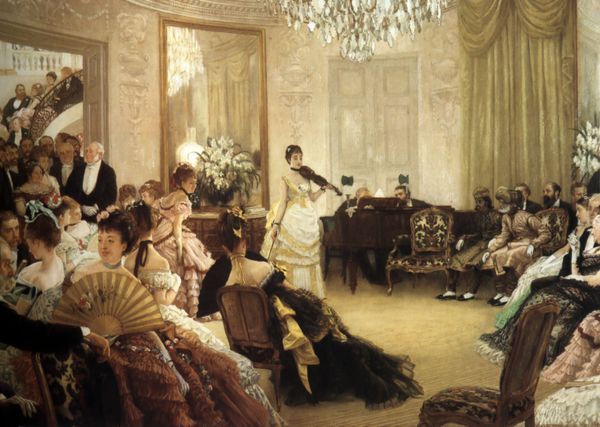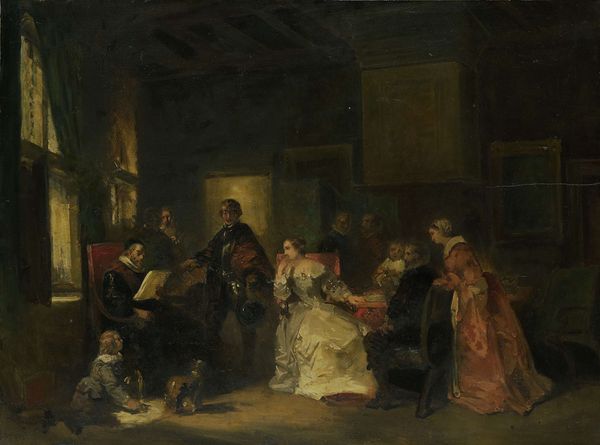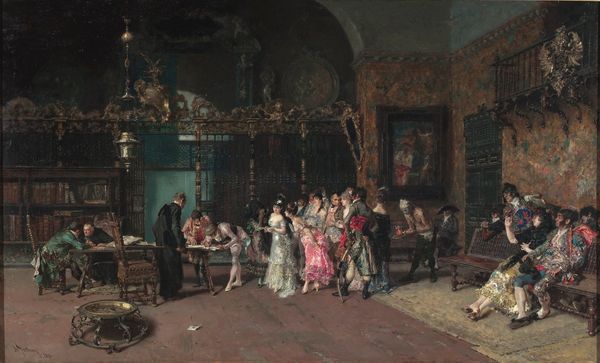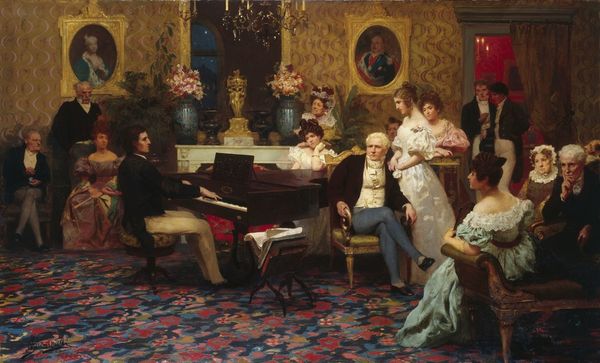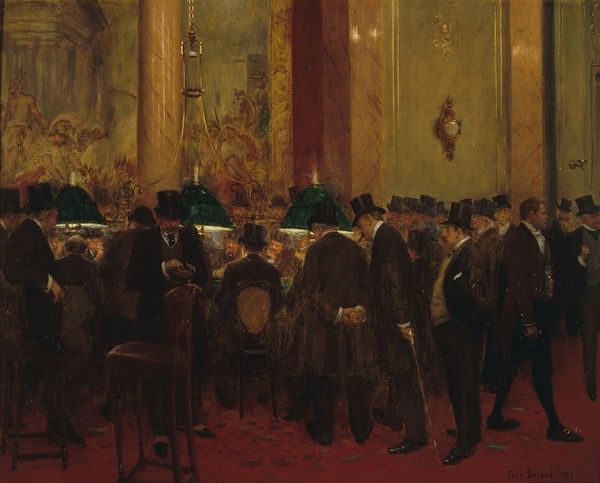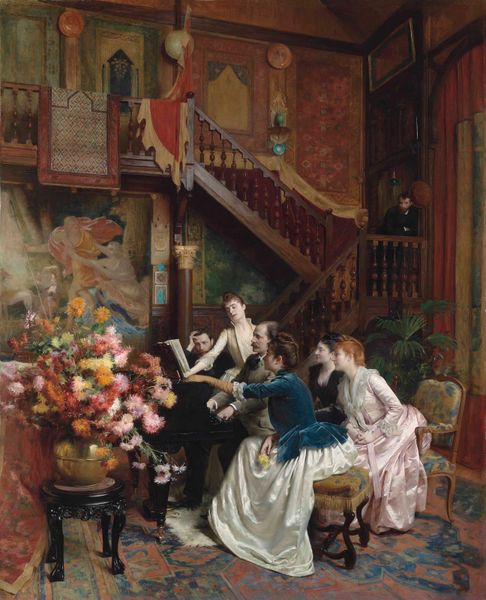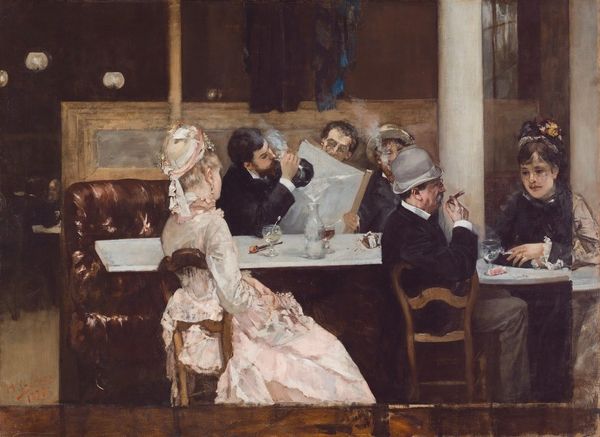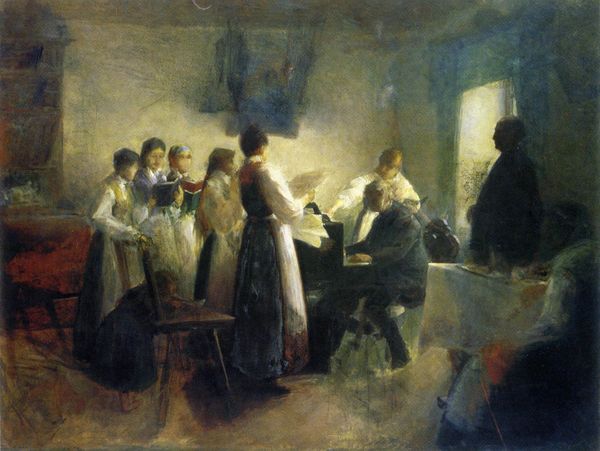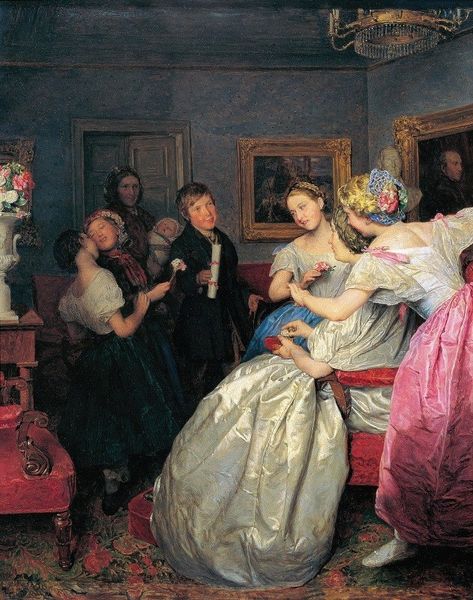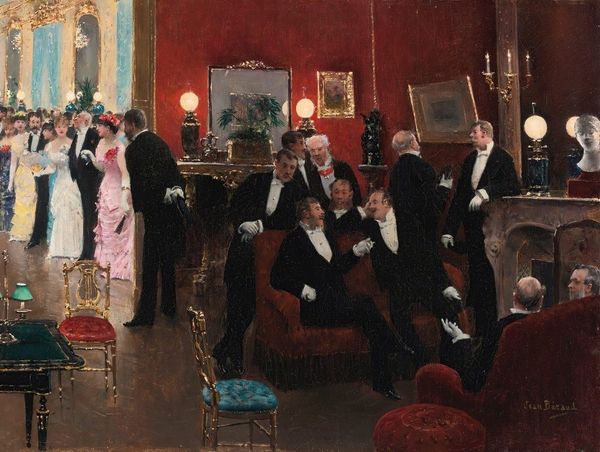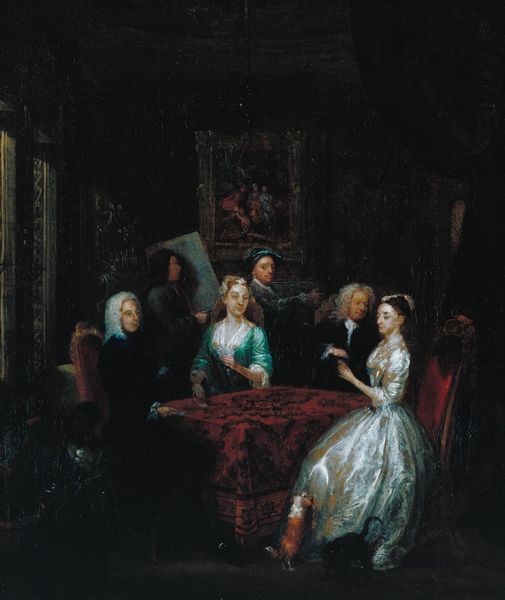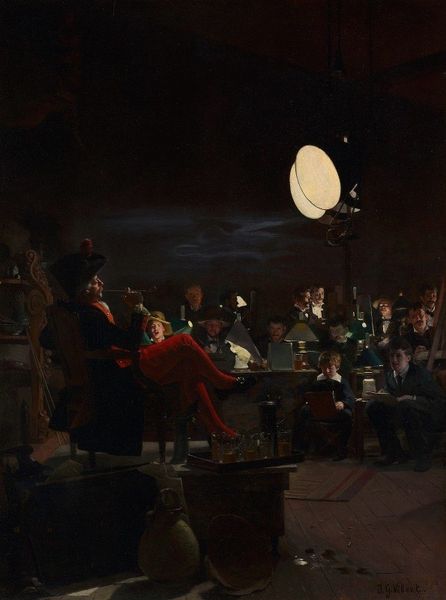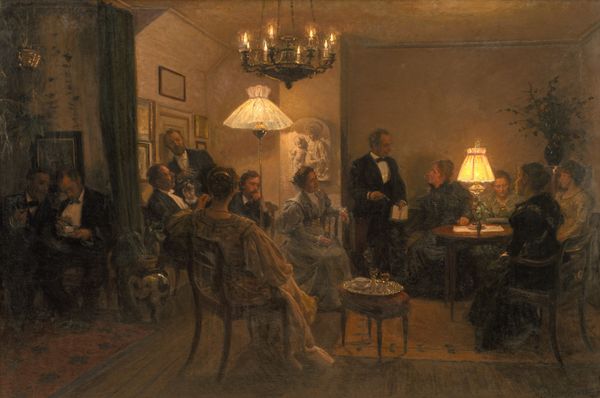
painting, oil-paint
#
portrait
#
figurative
#
painting
#
impressionism
#
oil-paint
#
intimism
#
genre-painting
Copyright: Public Domain: Artvee
Curator: Welcome. Here we have Peder Severin Krøyer's 1887 oil on canvas, "A Duet". It depicts a domestic scene, categorized as both portraiture and genre painting. Editor: What immediately strikes me is the hushed intimacy of the scene. It's rendered in a near-monochromatic palette; it is moody, even with the scattered candlelight. The singer seems the focus, yet everyone present is caught in their own reverie, bound together by this performance. Curator: Indeed. The composition shows an intriguing blend of traditional artistic production, in terms of technique, with a candid realism more attuned to depicting social rituals. Consider the detailing in the fabrics, balanced by the loose, almost hurried, brushstrokes suggesting a moment caught in time. This kind of artwork reflected a specific bourgeois environment, it illustrates their understanding of leisure. Editor: I'm drawn to the subtle symbolism present. The candlelight itself acts as more than mere illumination; it serves as a symbol of warmth, shared experience and fragile beauty, which in turns lends the painting a deeper emotional resonance. The titular duet represents the idea of harmony, be it in the social or artistic sense, an echo of the figures intertwined visually across the canvas. Curator: I find the materials significant. Oil paint lends a certain richness and depth, but Krøyer's relatively loose handling implies that speed of production was part of the intention, capturing that very social ‘moment’. The consumption of such art served the upper classes but involved painters as artisans making luxury commodities that reinforced certain social values through skill and craftsmanship. Editor: I concur, the painting's value certainly stems from more than just craftsmanship. Krøyer offers insight into late 19th-century cultural sensibilities: the pursuit of art and beauty as refined enjoyment for those who possessed the time and money to indulge. Curator: Examining Krøyer’s piece beyond its symbolic value illuminates how artistic methods and materials interacted with class and production during this period, influencing perceptions about labour and value in artwork itself. Editor: The interplay between visible elements and what remains hidden is what I will remember. The painting captures an ethereal realm accessible through sound and emotion. Curator: For me it remains a captivating portrayal of material life, and labor during this crucial era.
Comments
No comments
Be the first to comment and join the conversation on the ultimate creative platform.
